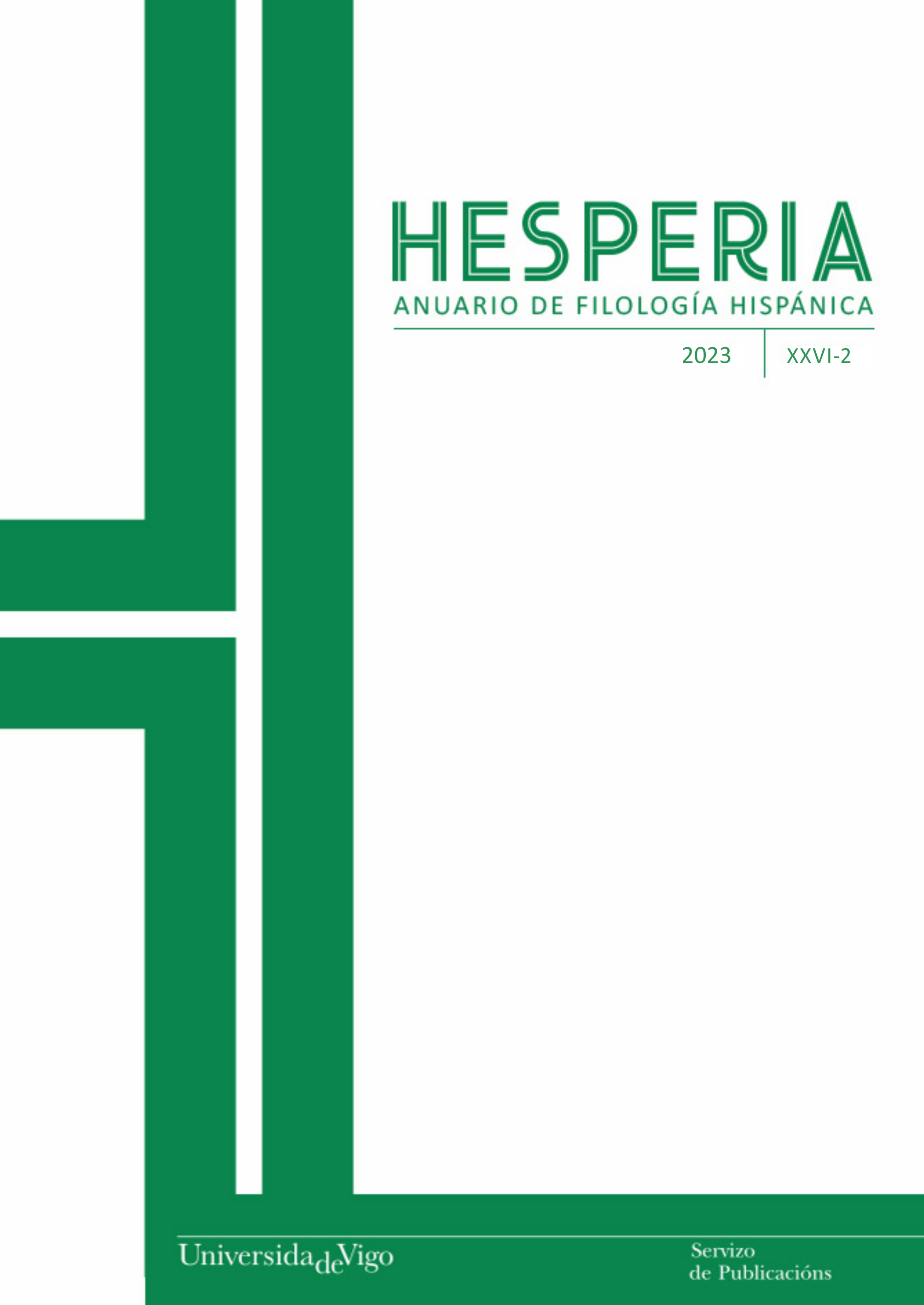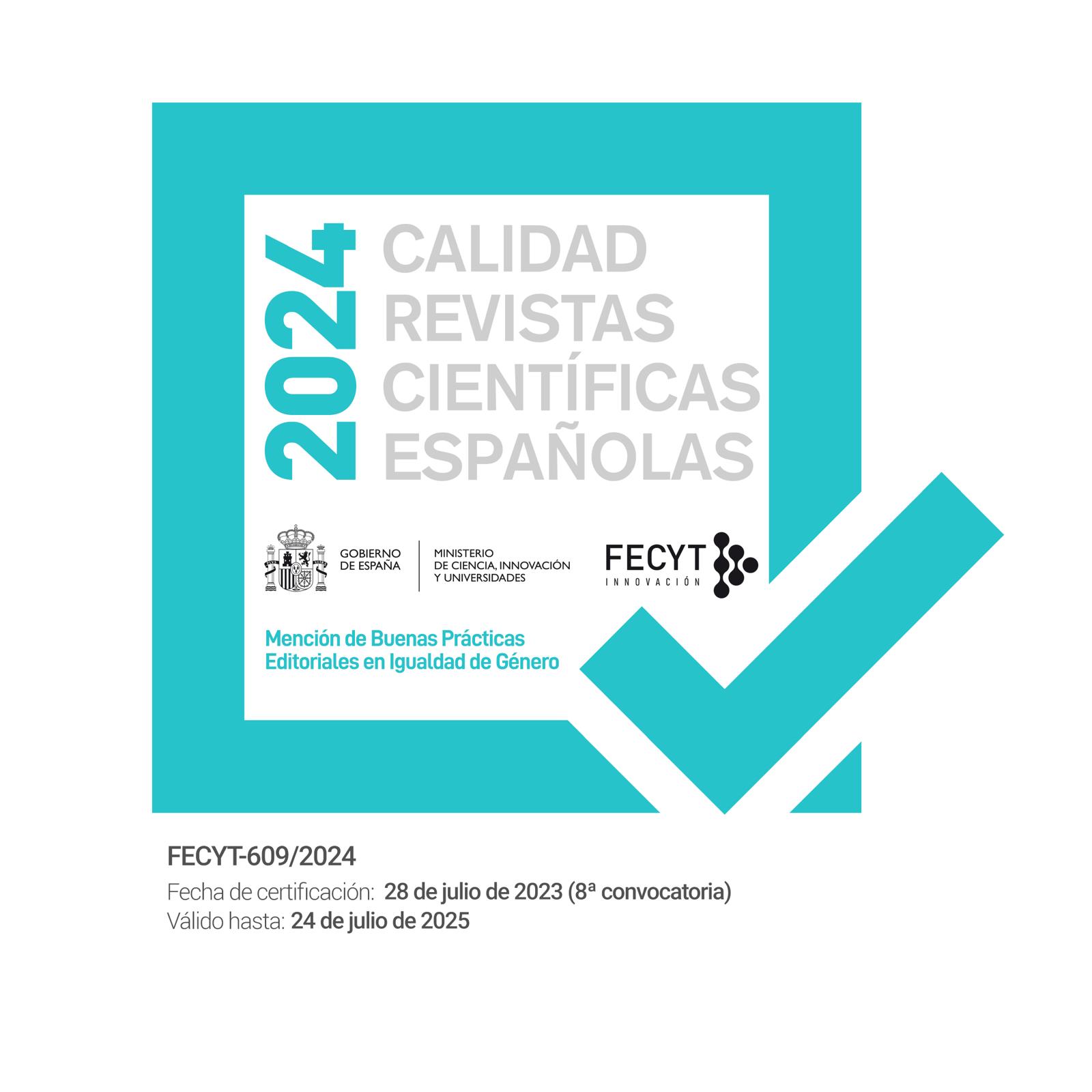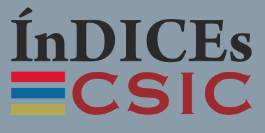FEMINISM AND INTERTEXTUALITY IN THE SUBTITLING (EN>FR; EN>ES) DE "THE HOURS"
DOI:
https://doi.org/10.35869/hafh.v26i2.4875Keywords:
Translation Studies, Audiovisual Translation, Intertextuality, Feminist Studies, Cognitive LinguisticAbstract
The Hours (2002) is a film that was produced in the early 21st century, based on Michael Cunningham’s eponymous novel, published in 1998. The film holds great value from a feminist perspective as it addresses highly relevant issues within gender studies. These topics include societal expectations for each gender, identity, homosexuality and
discrimination, the idealization of motherhood under the concept of the angel in the house, mental health and its relationship with gender, and sisterhood. Additionally, intertextuality plays a key role, as one of the main characteristics of The Hours is its constant reference to Virginia Woolf ’s Mrs. Dalloway. The main objective of this study has been to
analyse, from a translational, philological, and intertextual perspective, the translation into Spanish and French of a selection of scenes dealing with two essential themes: motherhood and mental health. The scenes comprised in the corpus underwent linguistic and translational analysis. On one hand, the content analysis had a triple purpose: addressing the
content from feminist literary criticism, Cognitive Linguistics, and intertextuality to explore the selected corpus from a gender perspective, examining translations from a contrastive viewpoint focusing on aspects related to translation and cognition, and investigating the intertextual relationships established, mainly with Mrs. Dalloway. On the other hand, the
translational analysis focused on the translational study of the English and French translations, exploring how different challenges associated with the spatiotemporal constraints of subtitling were addressed. Regarding the results, significant differences were found between the French and Spanish translations. In the case of French, expansion and embellishment techniques were chosen, while in the case of the Spanish translation, the translation remained close to the original.
Downloads
References
Anguita Martínez, V. (2019). Los efectos secundarios del electrochoque en la poesía de Anne Sexton: «Music Swims Back to Me» y su traducción al español. Hikma, 18(1), 211–230. https://doi.org/10.21071/hikma.v18i1.11207
Anguita Martínez, V. (2020). Anne Sexton y Alda Merini: La creación literaria para la desinstitucionalización psiquiátrica. Traducción, poesía y relevancia. Madrid: Sindéresis.
Ávila-Cabrera, J. J., & Esteban, A. C. (2021). The project SubESPSKills: Subtitling tasks for students of Business English to improve written production skills. English for Specific Purposes, 63, 33-44. https://doi.org/https://doi.org/10.1016/j.esp.2021.02.004
Baños-Piñero, R., & Chaume, F. (2009). Prefabricated Orality: A Challenge in Audiovisual Translation. inTRAlinea, Special Issue: The Translation of Dialectics in Multimedia.
Barcelona, A. (2012). Introduction: The cognitive theory of metaphor and metonymy. En Metaphor and Metonymy at the Crossroads: A Cognitive Perspective. https://doi.org/10.1515/9783110894677.1
Barry, P. (2002). Beginning Theory: An Introduction to Literary and Cultural Theory. Manchester University Press.
Barthes, R. (1977). The Death of the author, translated by Stephen Heath. En Image, music, text: essays selected and translated by Stephen Heath.
Bertens, H. (2017). Literary Theory: The Basics. Routledge.
Botella Tejera, C. (2010). El intertexto audiovisual y su traducción: referencias cinematográficas paródicas en Family Guy. Tesis doctoral. Universidad de Alicante.
Botella Tejera, C. (2017). La traducción del humor intertextual audiovisual. que la fuerza os acompañe. Monografias de Traduccion e Interpretacion (MonTI), 2017(9). https://doi.org/10.6035/MonTI.2017.9.3
Botella Tejera, C. (2023a). Mechanisms to detect and translate audiovisual intertextuality in the dubbing of animated productions into Spanish. En The Translator. https://doi.org/10.1080/13556509.2023.2192452
Botella Tejera, C. (2023b). Hasta el infinito y… “mucho más allá”. Acercamiento a una taxonomía de intertextualidad en producciones Disney Pixar. En E.C. Bourgoin & R. Méndez. Traducción y paratraducción. Líneas de investigación II. Peter Lang.
Botella Tejera, C., & García Celades, Y. (2019). Intertextuality in Zootopia. Child’s play? Trans, 23. https://doi.org/10.24310/TRANS.2019.v0i23.4927
Botella Tejera, C., & Méndez González, R. (2020). Una aproximación al intertexto videolúdico. El caso de Leisure Suit Larry: Reloaded. Hikma, 19(1). https://doi.org/10.21071/hikma.v19i1.11436
Centro Virtual Cervantes. (2022). Lingüística cognitiva. Diccionario de términos clave de ELE. https://cvc.cervantes.es/ensenanza/biblioteca_ele/diccio_ele/diccionario/linguisticacognitiva.htm#:~:text=La%20ling%C3%BC%C3%ADstica%20cognitiva%20(tambi%C3%A9n%20llamada,memoria%2C%20la%20atenci%C3%B3n%2C%20etc.
Cerezo Merchán, B., Chaume Varela, F., De Higes Andino, I., De los Reyes Lozano, J., Granell Zafra, J., & Martí Ferriol, J. L. (2019). La traducción para la subtitulación en España. Mapa de convenciones. En La traducción para la subtitulación en España. Mapa de convenciones. https://doi.org/10.6035/estudistraduccio.trama.2019.4
Croft, W., & Cruse, D. A. (2004). Cognitive Linguistics. Cambridge University Press.
Cunningham, M. (1998). The Hours.
Daldry, S. (2002). The Hours. Paramount Pictures.
Danan, M. (2004). Captioning and subtitling: Undervalued language learning strategies. Meta, 49(1). https://doi.org/10.7202/009021ar
Díaz-Cintas, J. (2005). Back to the Future in Subtitling. MuTra 2005 – Challenges of Multidimensional Translation: Conference Proceedings.
Díaz-Cintas, J., & Remael, A. (2007). Audiovisual Translation: Subtitling. St. Jerome. Publishing.
Díaz-Cintas, J., & Remael, A. (2020). Subtitling: Concepts and practices. Routledge. Routledge.
Fernández-Costales, A. (2017). Subtitling in CLIL: Promoting Bilingual Methodologies through Audiovisual Translation. En M. E. G. Parra & R. Johnstone (Eds.), Educación bilingüe: tendencias educativas y conceptos claves = Bilingual Educational: Trends and Key Concepts (pp. 185-196). Ministerio de Educación, Cultura y Deporte. https://doi.org/10.4438/030-17-133-4
Genette, G. (1989). Palimpsestos. La literatura en segundo grado. Taurus.
Gilbert, S., & Gubar, S. (1979). The Madwoman in the Attic. https://doi.org/10.1515/9781474465519-019
Goodman, L. (2013). Literature and Gender. Routledge.
Gottlieb, H. (2004). Language-political implications of subtitling. https://doi.org/10.1075/btl.56.11got
Halliday, Michael A. K. & Webster, J.J. (2004) Continuum Companion to Systemic Functional Linguistics. Nueva York: Continuum.
Huertas-Abril, C. A., & Gómez-Parra, M. E. (2018). Inglés para fines sociales y de cooperación: Guía para la elaboración de materiales. Graò.
Ibarretxe-Antuñano, I. (2013). The relationship between conceptual metaphor and culture. Intercultural Pragmatics, 10(2). https://doi.org/10.1515/ip-2013-0014
Ibarretxe-Antuñano, I., & Valenzuela-Manzanares, J. (2021). Lenguaje y cognición. Editorial Síntesis.
Kramsch, C. (2017). Culture in Foreign Language Teaching. Bakhtiniana, 12(3). https://doi.org/10.1590/2176-457333606
Kristeva, J. (1978). Semiótica. Fundamentos.
Mairal Usón, R., Pérez Cabello de Alba, M. B., Teomiro García, I. I., Ruiz de Mendoza Ibáñez, F. J., & Peña Cervel, M. S. (2019). Teorías lingüísticas. Editorial UNED.
Mayoral Asensio, R. (1990). El lenguaje en el cine. Claquette, 1, 43-54.
Moreno Peinado, A. (2005). La traducción de la intertextualidad en textos audiovisuales: a la búsqueda de una metodologías. En M. L. Romana García (Ed.), II AIETI. Actas del II Congreso Internacional de la Asociación Ibérica de Estudios de Traducción e Interpretación. Madrid, 9-11 de febrero de 2005. (pp. 1207-1217). AIETI. https://www.aieti.eu/wp-content/uploads/AIETI_2_AMP_Traduccion.pdf
Myslovska, O., & Prokopovych, N. (2018). Linguo-stylistic realization of the symbol “TIME” in the novel “The Hours” by Michael Cunningham. Science and Education a New Dimension, VI(160)(47). https://doi.org/10.31174/send-ph2018-160vi47-10
Ogea Pozo, M. del M. (2021). The translation of Watchmen: a job for superheroes? AVANCA | CINEMA, 996-1007. https://doi.org/10.37390/avancacinema.2021.a336
Ogea-Pozo, M. (2018). Subtitulado del género documental: de la traducción audiovisual a la traducción especializada. Sindéresis.
Ogea-Pozo, M. (2020). La traducción audiovisual desde una dimensión interdisciplinar y didáctica. Sindéresis.
Santillán, M. (2010). El discurso tradicionalista sobre la maternidad: Excélsior y las madres prolíficas durante el avilacamachismo. Secuencia, 77. https://doi.org/10.18234/secuencia.v0i77.1117
Sarti Valdez, M. R. (2020). Woolfian Footprint on Cunningham´s The Hours: Women´s Empowerment and Resistance. Universidad Nacional de Educación a Distancia (UNED).
Sellers, S. (2007). A History of Feminist Literary Criticism (G. Plain & S. Sellers, Eds.). Cambridge University Press. https://doi.org/10.1017/CBO9781139167314
Shevkun, A. v. (2020). Artistic Realization Of The Concept “The Death Of The Author” In The Novel “The Hours” By M. Cunningham. Scientific notes of Taurida National V.I. Vernadsky University, series Philology. Social Communications, 3(2). https://doi.org/10.32838/2663-6069/2020.2-3/26
Showalter, E. (1987). The Female Malady: Women, Madness and English Culture, 1830-1980. En Feminist Review (Número 27). Virago. https://doi.org/10.2307/1394815
Showalter, E. (1992). Killing the Angel in the House: The Autonomy of Women Writers. The Antioch Review, 50(1/2). https://doi.org/10.2307/4612511
Steyaert, C. (2015). Three women. A kiss. A life. On the queer writing of time in organization. Gender, Work and Organization, 22(2). https://doi.org/10.1111/gwao.12075
Talaván, N. (2019). Subtitling as a task and subtitles as support: pedagogical applications. En J. Díaz Cintas, A. Matamala, & J. Neves (Eds.), New Insights into Audiovisual Translation and Media Accessibility. https://doi.org/10.1163/9789042031814_021
Tashchenko, G. (2020). Gender identity in translation (Based on the hours by M. Cunningham). En Translation and Power.
Tinedo Rodríguez, A. J. (2021). Redescubriendo el canon a través de la traducción. El canon desde una óptica de género como recurso didáctico. International Journal for 21st Century Education, 8(1). https://doi.org/10.21071/ij21ce.v8i1.13753
Tinedo-Rodríguez, A. (2021). La perspectiva de género, la competencia multicultural y la mejora de la competencia comunicativa a través de los textos: propuesta pedagógica basada en «The yellow wallpaper». En F. J. Perea Siller, C. Peragón López, A. Vara López, L. Cabrera Romero, & E. Ramírez Quesada (Eds.), Lenguaje, textos y cultura Perspectivas de análisis y transmisión (pp. 117-136B). Octaedro.
Tinedo-Rodríguez, A. J., & Huertas-Abril, C. A. (2019). English for Social Purposes: Feminist Literary Criticism as a Tool to Increase Motivation and to Promote Gender Equality. En F. J. Palacios-Hidalgo (Ed.), Educación en Contextos Plurilingües: Metodología e Innovación (pp. 55-60). UCOPress.
Torres Zambrano, Y. (2020). La Maternidad como ideal femenino,. Perspectivas Revista de Ciencias Sociales, 9. https://doi.org/10.35305/prcs.v0i9.149
van Nes, F., Abma, T., Jonsson, H., & Deeg, D. (2010). Language differences in qualitative research: Is meaning lost in translation? European Journal of Ageing, 7(4). https://doi.org/10.1007/s10433-010-0168-y
Woolf, V. (1925). Mrs. Dalloway. En Mrs. Dalloway. https://doi.org/10.5117/9781904633242
Woolf, V. (1941). Suicide Note.















